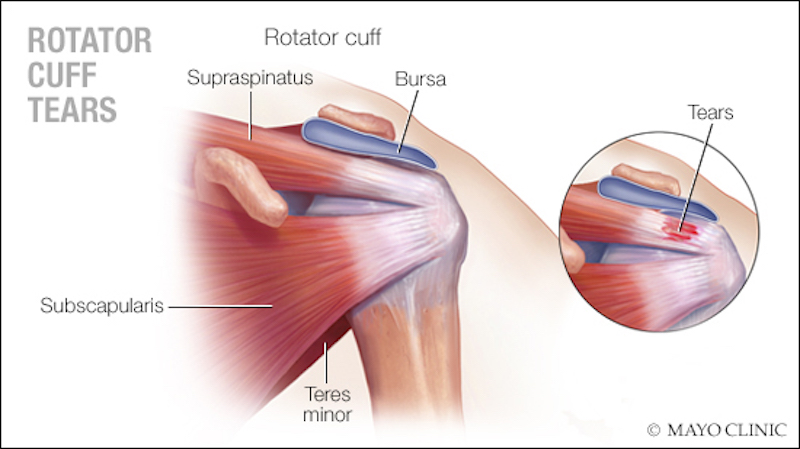Archers enjoy few things more than shooting their bows. If time allowed, many of us would shoot daily as long as possible. That sounds great, but shooting too much can cause fatigue, poor form and, in some cases, shoulder pain.
Nagging shoulder injuries put a damper on your shooting regimen, so let’s discuss what causes shoulder pain and how to deal with it.
Rotator Cuff

The rotator cuff is a complex system of muscles and tendons in your upper arm that go to work every time you draw a bow. It helps you raise and rotate your arm. You can reduce its workload by pulling with your shoulder blades and back muscles when drawing your bow. Overexertion can exhaust your muscles and hurt your form.
Rotator cuff injuries include tendinitis, bursitis and, in severe cases, a tear. Tendinitis occurs when the tendon attached to the bone gets inflamed. It’s a minor injury commonly treated by icing the area and reducing activity for a few days.
The bursa is a small, fluid-filled sac that protects the rotator cuff. Bursitis occurs when the bursa gets irritated, and you can treat it with rest, ice and over-the-counter anti-inflammatory medicine. A torn rotator cuff, however, is serious. It can sideline you from archery for months. A tear is not always easy to diagnose. Symptoms include trouble lifting things, raising your arm, pain when moving certain ways, weakness in your shoulder, or an audible clicking or popping when using your shoulder. If you have any such symptoms, stop shooting and consult a doctor. Surgery to repair a torn rotator cuff can lead to a long rehabilitation, but most archers recover and resume shooting when completing therapy.
Forearm

The forearm of your bow arm – the one that grips the bow – is also susceptible to overuse injuries. Many forearm muscles and tendons work throughout the draw cycle and steady your bow at full draw. Overusing them can cause pain and inflammation. The best remedy is often rest or reducing shooting activity. A weeklong rest can be frustrating, but it helps muscles and tendons rebuild, and reduces the risk of more severe injuries.
Rather than shooting to exhaustion, consider shooting daily for short intervals. Focus on perfect form during these brief sessions. Good habits shrink your groups and reduce injury risks. After you spend weeks building your strength and perfecting your habits, gradually lengthen your practice sessions. Don’t wait to start until a month before a tournament or the hunting season. You’ll ensure you’re ready to go on opening day if you start practicing early.
Conclusion
By modifying your activity and gradually working yourself into a new shooting regimen, you’ll also learn plenty of exercises that strengthen muscles and joints. You’ll find many great resources for archery-focused exercises, and many don’t require a gym membership or fancy workout equipment. By taking measures to prepare your body, you’ll enjoy more success and find more satisfaction in archery, and live a healthier, happier life.




